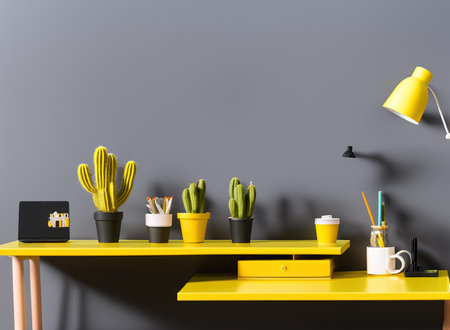Understanding the Value of British Artisan Craft
To truly incorporate local artisan craft into modern British spaces, it is essential to first appreciate the heritage and enduring value of craftsmanship across the UK. For centuries, British artisans have shaped their communities with skill, ingenuity, and pride. From hand-thrown ceramics in the Potteries of Stoke-on-Trent to the intricate textiles woven in Yorkshire mills, traditional techniques and locally sourced materials form the backbone of British design identity. This rich legacy is not simply about nostalgia; rather, it represents a living tradition where makers adapt historic methods for contemporary needs. By recognising the significance of regional crafts – be it Cornish tinware, Scottish tweed, or Cotswold stone masonry – we honour both the artistry and sustainability inherent in these practices. Integrating such elements into modern spaces celebrates authenticity, supports local economies, and fosters a sense of place that is uniquely British.
Identifying Authentic Local Makers
When incorporating artisan craft into modern British spaces, the authenticity of your chosen pieces makes all the difference. Genuine local makers bring a distinct narrative and heritage to their work, so it’s essential to identify true British artisans rather than mass-produced imitations. Here are some practical methods and tips for sourcing authentic creators.
Visiting Craft Fairs and Markets
Craft fairs remain one of the best ways to connect with local talent face-to-face. Events such as the Great Northern Contemporary Craft Fair in Manchester or the Made London showcase feature a wide array of skilled artisans from across the UK. Take time to chat with makers about their techniques and inspirations—most are proud to share their story. Remember, regional events often highlight unique styles specific to that area, providing an opportunity to discover lesser-known crafts.
Exploring Artisans’ Studios
Many artisans welcome visitors by appointment or during open studio weekends, offering insight into their creative process and materials. This direct engagement helps you appreciate the craftsmanship involved and ensures that each piece is truly handmade locally. Check local council listings or organisations such as Open Studios UK for upcoming opportunities.
Using Reputable Online Platforms
If attending fairs or visiting studios isn’t feasible, reputable online platforms are invaluable resources. Websites like Crafts Council Directory, Made by Hand Online, and Etsy UK enable you to filter by region, craft type, or even specific maker. Always review seller profiles for clear information on provenance and materials used.
Comparison of Sourcing Methods
| Sourcing Method | Advantages | Considerations |
|---|---|---|
| Craft Fairs & Markets | Meet makers directly; view work in person; regional variety | Event schedules; travel required; limited stock per event |
| Studio Visits | Insight into techniques; bespoke commissions possible; authentic experience | By appointment; may be rural locations; advance planning needed |
| Online Platforms | Wide selection; convenient browsing; searchable filters | Verify authenticity; shipping costs; cant inspect items before purchase |
Tip:
Always look for makers who offer background stories, details about their process, and transparency about materials—these signals set apart genuine artisans from commercial resellers. By being discerning at this stage, you ensure your modern British space tells a meaningful local story through every crafted piece.

3. Selecting Crafts that Complement Contemporary Interiors
When choosing local artisan crafts for modern British spaces, it is essential to find pieces that strike a balance between traditional craftsmanship and contemporary aesthetics. Consider the material, colour palette, and form when integrating textiles, ceramics, woodwork, and metalwork into your home.
Textiles
Opt for handwoven or naturally dyed textiles in muted tones or subtle patterns. British wool throws, linen cushions from Scottish weavers, or even block-printed fabrics can introduce warmth without overpowering sleek lines or neutral interiors. Focus on textures that add depth while maintaining a clean visual profile.
Ceramics
Look for locally made ceramics with minimalist forms or understated glazes. Pieces by British potters often combine timeless shapes with earthy finishes—perfect for open shelving or as feature vases on dining tables. Select items that echo your existing decor’s colour scheme to ensure cohesion.
Woodwork
Bespoke wooden furniture or smaller accent pieces like turned bowls offer tactile contrast to modern materials such as glass and steel. Choose light oak or ash for a Scandinavian-inspired look, or darker walnut for added richness. Seek out artisans who use sustainably sourced British timber to support local industry and maintain environmental responsibility.
Metalwork
Incorporate wrought iron candlesticks, brass light fittings, or copper trays produced by local smiths to inject character and craftsmanship into your space. These elements work particularly well as statement accents against crisp white walls or minimalist layouts, lending a hint of heritage without feeling dated.
Practical Tips
To avoid visual clutter, select one or two craft elements per room and allow them to shine amidst your modern furnishings. Visit local makers’ markets or studios across the UK to source unique pieces directly from artisans—this personal connection often adds meaning and context to each item you bring home.
4. Practical Placement within Modern Spaces
Thoughtfully integrating local artisan craft into contemporary British environments requires a careful balance of heritage and modernity. Whether you are updating your home, refreshing an office, or enhancing a communal area, the key lies in placement and context. Below are some pragmatic approaches to achieving this harmony.
Homes: Creating Visual Dialogue
In residential settings, artisan pieces can serve as both focal points and subtle accents. Consider the following strategies:
| Space | Artisan Craft Suggestion | Integration Tip |
|---|---|---|
| Living Room | Hand-thrown ceramics on mantlepieces or shelves | Cluster with contemporary glassware for contrast |
| Kitchen/Dining Area | Locally woven table runners or pottery serving dishes | Pair with minimalist cutlery and neutral palettes |
| Bedroom | Bespoke textiles as throws or cushion covers | Mix with modern bedding for layered textures |
Offices: Inspiring Productivity and Creativity
The workplace benefits from touches of artisan craftsmanship that foster a sense of place and creativity. Incorporate hand-crafted desk accessories—such as wooden pen trays or ceramic mugs—on otherwise sleek workstations. Wall hangings made by local artists can break up blank expanses and add warmth without compromising professionalism.
Communal Environments: Fostering Community Spirit
Public areas such as lobbies, libraries, or cafes present opportunities for larger-scale integration. Feature locally made sculptures or collaborative mural projects to reflect regional identity. For shared tables or seating, combine traditional joinery with contemporary upholstery, demonstrating a respect for both past techniques and present comfort.
Balancing Old and New Aesthetics: Key Considerations
- Curation over Clutter: Select a few standout pieces rather than overwhelming the space.
- Complementary Colour Schemes: Match natural tones from artisan items with current interior trends for cohesion.
- Zoning: Use crafts to define areas within open-plan layouts, such as placing a handmade rug beneath a reading nook.
- Narrative Elements: Include informational plaques or QR codes to share the makers’ stories, deepening appreciation and connection.
This approach ensures that local artisan craft is not just decoration but an active component in shaping distinctive modern British spaces.
5. Supporting Sustainable and Ethical Practices
When integrating local artisan crafts into modern British spaces, it is vital to consider the broader impact of your choices. Sourcing artisan goods goes beyond aesthetics; it is about supporting eco-friendly materials and ethical production methods. Many British artisans are committed to using sustainably sourced wood, recycled glass, organic textiles, and natural dyes. These choices ensure that the environmental footprint of each piece remains minimal, aligning with the growing movement towards greener living in the UK.
Equally important is the issue of fair-wage production. The UK has a proud tradition of craftsmanship, but it is essential to verify that makers receive fair compensation for their skills and labour. When selecting artisan items—whether ceramics from Stoke-on-Trent or woven baskets from the Scottish Highlands—take time to understand the supply chain and support businesses that prioritise fair treatment of their workers. Look for certifications or open communication about how artisans are paid and treated within their craft communities.
By intentionally choosing products crafted with respect for people and planet, you reinforce a culture of responsibility within your home or workspace. In doing so, you contribute to the longevity of traditional skills and encourage a healthier future for British craft industries. Ultimately, sustainable and ethical selection not only enhances your interior but also connects your space with values rooted in care and integrity.
6. Celebrating Regional Diversity
One of the greatest strengths of incorporating local artisan crafts into modern British spaces is the opportunity to celebrate the rich regional diversity found across the UK. From the intricate Harris Tweed of Scotland to the iconic pottery of Stoke-on-Trent in England, each area offers unique materials and methods that tell a story about its people and landscape. Embracing this variety not only supports local makers but also brings depth and authenticity to contemporary interiors.
When curating pieces, consider actively seeking out crafts from all corners of the country. For example, handwoven Welsh blankets add warmth and colour, while traditional Irish linen introduces a refined texture and heritage. Northern Ireland’s glassware or basketry can provide elegant accents that spark conversation and pride. Displaying these items together—rather than isolating them—creates a dialogue between regions, giving a sense of unity through diversity within your space.
Encourage guests and residents alike to learn about the origins of each piece by using subtle signage or storytelling elements in your décor. This might include small cards explaining the craft’s background, or even QR codes linking to short videos featuring the artisans at work. Such thoughtful touches foster appreciation for Britain’s multifaceted cultural landscape and highlight how modern design can honour tradition without feeling dated or nostalgic.
Ultimately, making room for crafts from Scotland, Wales, England, and Northern Ireland ensures that your interiors reflect a truly British character—one defined by both individuality and collective heritage. It is this celebration of regional craft that transforms a house into a meaningful home, rooted in place yet open to new interpretations of style.


